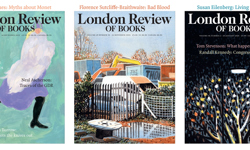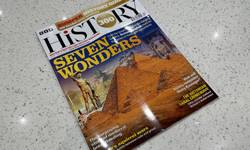Sometimes, things in the digital space seem to move excruciatingly slowly. Which is a bit of an oxymoron, really. Digital? Slow? How, precisely? Digital should be fast-paced and agile, right? Well, not always.
Before I started writing this month’s column, I re-read the last dozen or so pieces I’ve penned for InPublishing. I wanted to chart, in my own mind, where I am now against where I’d hoped our digital editions business would be at this stage when the column started two years or so ago.
There’s good news and bad. The good? I’m on course to see a business I launched from nothing in 2012 make a £1m contribution to the Bauer UK coffers for the first time this year, assuming our current sales trends continue and our forecasts are accurate. Obviously, there are still six months of trading left in the year and many ‘unknown-unknowns’ yet to face (as well as opportunities, I would hope) but I’m confident we can hit that figure. I’ll be opening the bubbly if we do, that’s for sure.
More good: on some of our titles, digital issues now contribute in excess of 10 per cent or more of overall ABC figures and it’s growing (slowly) and, as such, is more valued by editorial teams. Our specialist titles are doing well, though it’s bloody hard work and growth is not enough on many titles to mitigate against print decline. But still, growth is growth.
And the bad? Put bluntly, digital magazines are not the panacea we were all hoping for when the iPad 1 was released some six years ago. In fact, the uptake of them by the digitally-aware populous globally has been disappointing, especially on Android platforms. But – and it’s a big ‘but’ – if managed well and the readership demographic is suited to the medium, digital editions can contribute nicely to both circulation and profitability.
Like any business, I run Bauer’s ePublishing division on a pretty simplistic philosophy. We keep costs down, we constantly seek to achieve efficiencies while improving the product, growing the business through effective and targeted marketing while looking for new revenue streams continuously.
Keeping costs down while improving the product also sounds like an oxymoron, right? Well, not necessarily! Currently, our portfolio of 48 titles operates across three different softwares. One of our many recent projects has been to evaluate all the different software options out there – including the three we’re already using – and identify one solution that suits all our titles and associated requirements, before considering the migration of all our titles to it, not just in the UK, but globally across the Bauer business, with the assistance of a central digital team in our Hamburg offices.
The benefits are obvious – the more titles you have, the more powerful your negotiating position is and the less the cost of individual licenses per title; thus offering a greater chance of profitability for the smallest titles, even if they only sell a few hundred an issue.
The principle difficulty? Finding that one piece of software and then moving to it!
Complex requirements
Our requirements are many and complex, our magazines hugely different in subject matter, resource and readerships. How, for instance, do you find a piece of software that works for Empire (one of our digital flagships) while at the same time, offering the ideal digital editions solution to Car Mechanics? Or Model Rail? Or Sea Angler? A solution that’s perfect for a title that sells 14,000 digital copies a month as well as being profitable and manageable in production terms for one that sells 500?
I mentioned Car Mechanics. It’s right at the more extreme end of our portfolio in the sense that it’s run almost single-handed by a quite amazing and understated editor, Martyn Knowles. He designs and manages the brand editorially across print, digital and social platforms, so the last thing he needs is digital edition software that’s time consuming and complex to operate.
What we’re looking for, both for Car Mechanics and other titles with smaller resource in terms of editorial and production capacity, is a good quality, PDF solution which is fully automated. PDFs are sent at the click of a mouse and the app is populated with content, so all Martyn has to do, if he wants, is check all the pages are present and correct before the issue goes live. Easy.
PDF-based apps are much-maligned in many quarters, but they’re cheap to run and profitable. I do recognise, though, that there’s not much of a long-term future in them, so we’re also (as part of this project) investigating automated XML extraction and population of templates to ensure readers with mobile phones aren’t subjected forever to the horrors of having to read PDFs on smaller screens. With costs coming down and some neat solutions being developed out there, that’s not far off being financially viable now, even for our less recognised titles.
The same software, on top of this PDF functionality, also needs to be versatile and give Empire, Car, Practical Photography etc the chance to create bespoke, beautiful, fully interactive pages, with one build to suit all devices and platforms.
Additionally, it has to offer the chance for editorial teams to create and adapt templates for sections of their titles that suit a templated approach – saving production time and cost while delivering a superior UX that’s perfectly shaped for every smartphone or tablet.
Then we have titles like MCN, Today’s Golfer and Land Rover Owner, with moderate resources but decent, slowly growing digital sales that indicate that a progression forward from flat PDFs could at last be possible to grow the business further, with costs kept down or even lowered. Here, a hybrid combo of some PDFs (largely ads, probably) responsive templates and maybe some bespoke interactive pages would be feasible.
How close are we to achieving these goals? Does software offering all this even exist?
As I said, sometimes things in the digital space move excruciatingly slowly. This is a project I’ve had on the go now for almost a year. It may be another twelve months before our full vision for Bauer’s ePublishing business is finally in place. Whatever happens, the second half of 2016 for me is going to be a very interesting time.
Anyway, enough already. I’d best get back to work (it’s lunchtime). Ah, there’s the final oxymoron of this issue’s column – Jim Foster and work! Ahem…












